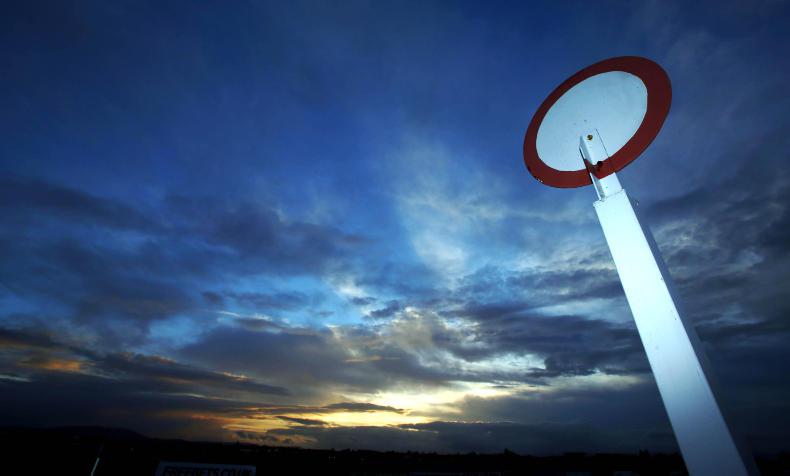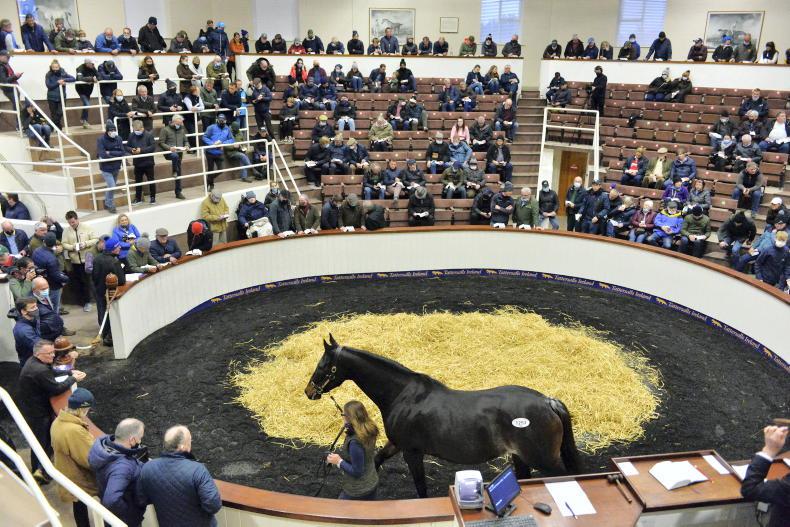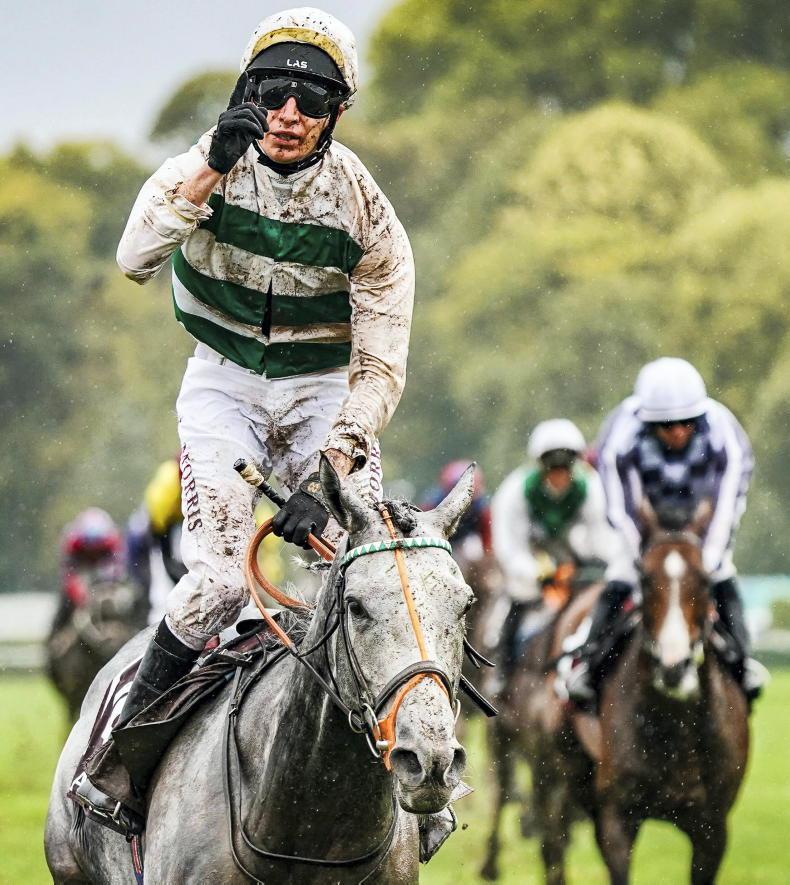THE year 2021 was dominated by the Covid-19 pandemic, and at the time of writing, not only is there no end in sight, but the situation is getting even worse.
Life has been especially hard for racecourses with many restrictions in place causing considerable financial problems.
Prize money in Germany is now the lowest of any leading European country and basically the whole of the German racing and breeding industry has shrunk by about a half this century; there are now only about 800 live thoroughbred foals reported each year and fewer than 50 thoroughbred stallions based in the country. Only 16 of them covered more than 20 mares in 2021, which is almost certainly uneconomic.
However, these numbers, while only 10% of the equivalent numbers in Ireland, for example, have been more or less stagnant for the past five years and have arrived at a plateau which, while very low is still just about viable to maintain racing at its current level.
There were also certainly some bright spots amidst all the gloom. There are some still owners and breeders prepared to pay proper money for the right yearlings and broodmares, as the recent sales at Tattersalls, Goffs and Arqana have shown.
Owning a racehorse in Germany is these days most unlikely to be profitable, while the sport itself has very little coverage on TV or in other media, where the scene is totally dominated by football.
When a German horse won the Arc this year, my local paper had six pages devoted to sport, five of them covered football and the sixth mentioned such minority events as ice hockey and table tennis, but there was not a single word devoted to Torquator Tasso and his historic victory in Paris.
Highlight
Nevertheless, that result was without any doubt the highlight of 2021 as far as the German racing community is concerned. Torquator Tasso’s breeder is in fact a Dutchman, Paul H. Vandeberg, but otherwise he is in every respect German.
He was reared in Germany, he is owned by Germans, he is trained in Germany and was ridden by a German jockey.
His sire Adlerflug was a son of In The Wings and hence a representative of the Northern Dancer sire line, but he was bred by Germany’s oldest private stud Gestüt Schlenderhan, won the German Derby for them in 2007 and stood for his entire stud career in Germany.
Inbred
He is a member of Schlenderhan’s highly influential “A” family and Torquator Tasso is inbred to the dam of Allegretta, the dam of Arc winner Urban Sea, herself the dam of champions Galileo and Sea The Stars.
Current plans for 2022 are that Torquator Tasso is to stay in training with Marcel Weiss as a five-year-old with another crack at the Arc as his main target. He is expected to retire to stud in 2023 to Gestüt Auenquelle, who own him, where he will probably replace Soldier Hollow (another son of In The Wings) who has been Germany’s leading – and also most expensive – sire for the past decade, but is getting old.
Adlerflug died at Easter this year of a heart attack, a huge blow for the German bloodstock industry. Even without Torquator Tasso’s huge Paris pot, which does not count for German statistics, he was still champion sire in 2020 and also 2021 and was just beginning to establish himself as a leading international sire.
Torquator Tasso had already won Germany’s top race, the Grosser Preis von Baden, in which he defeated the current winner of the German Derby, Sisfahan, who signed off for the season with a respectable seventh place in the Breeders’ Cup Turf.
Sisfahan was undoubtedly a decent Derby winner and of course his runner-up spot in Baden-Baden now reads well. However, the form of the 2021 German Derby was certainly not as outstanding as that of the previous year, when In Swoop – later runner-up in the Arc – and Torquator Tasso finished first and second, both sons of Adlerflug.
Sisfahan, who is trained in Cologne by Henk Grewe, remains in training; his sire Isfahan, who won the German Derby in 2016, has made an excellent start to his stud career, but his own sire Lord of England was another to have passed away this year.
Star fillies
Apart from the two colts mentioned above, the two big stars of 2021 were fillies. Palmas, a three-year-old daughter of Lord Of England, was an impressive winner of her first three starts, including the German Oaks (Preis der Diana) which she won by six lengths in record time.
She looked a world-beater there, but unfortunately the weather turned against her when she was sent to Paris for the Prix de l’Opera; while Torquator Tasso’s team celebrated with every drop of rain that fell, it was exactly what Palmas did not want and she floundered in the heavy ground.
If she stays in training, she will be a hard nut to crack in the best company – as long as the rain stays away.
Kirsten Rausing’s homebred Alpinista was the other star filly. She went through 2021 unbeaten in five starts, winning twice in the UK before trainer Sir Mark Prescott, who has an outstanding record with his German raiders, sent her over to win three German Group 1s, the Grosser Preis von Berlin, the Preis von Europa and the Grosser Preis von Bayern.
They were the identical races which her grandam Albanova had won for Miss Rausing and Sir Mark in 2004, an amazing achievement.
In Berlin she defeated Torquator Tasso easily enough, although he did not get a clear run, and she also left Sisfahan well behind when scoring at Cologne. She is to stay in training at five with the Arc as her target – and a rematch with Torquator Tasso would obviously be extremely intriguing.
PRIZE money in Germany is relatively poor compared to most other leading nations, and Alpinista only earned €265,000 for her three top-level victories, less than a 10th of the sum Torquator Tasso collected in the Arc.
By far the most valuable races now in Germany are the Deutsches Derby and Preis der Diana, both supported by longstanding and loyal sponsors.
The Germans regard the trainer with the most races won as their champion trainer, and in this respect Peter Schiergen, whose horses ran consistently well throughout the year, is champion with 59 races won up to the time of writing, followed by Markus Klug (53) and Henk Grewe (48); however in terms of winnings Grewe comes out on top with €1.3 million in prize money.
Darius Racing, in whose name Derby winner Sisfahan ran, is leading owner, followed by Gestüt Etzean, owner-breeders of Palmas; Etzean is also leading breeder, as Sisfahan (bred in France) does not count for this purpose, and neither of course do the French winnings of Torquator Tasso.
Kazakhstan-born jockey Bauyrzan Murzabayev (28) is champion jockey for the third year running, and by a huge margin. He is now Peter Schiergen’s stable number one and is a truly excellent jockey.
Schiergen’s second jockey is Sibylle Vogt, who is easily Germany’s most successful female jockey and had another excellent season, including victory on Schiergen’s Novemba in the German 1000 Guineas, which made her the first female to ride the winner of any European classic.
New addition
Adlerflug (even without the Arc) is champion sire for the second successive year, followed by Isfahan, Soldier Hollow and Lord Of England; following the death of the last-named, Etzean has now acquired (in partnership) the former Aidan O’Brien-trained Japan as a new addition to their stallion roster. The Galileo colt looks exactly the type to do well in Germany and it will be fascinating to see how he does here.
One extremely positive factor to take out of the season just ending is the rebirth of the Baden-Baden racecourse at Iffezheim, which was taken over by a new management team at the beginning of the year.
The new team “Baden Galopp” already runs the much smaller racecourse at Mannheim, but it cannot have been a propitious time in which to take on the management of a major racecourse.
However, the team mastered the problems with bravura, and the four days of the “Grosse Woche” at the beginning of September went really well and certainly cemented Baden-Baden’s position as Germany’s leading racecourse.
The fact that Torquator Tasso won the Grosser Preis and then went on to take the Arc was of course another plus.
Attractive racecourse
Another positive feature was that Bremen, a small but very attractive racecourse in Northern Germany, was able to stage a race meeting in November after a break of more than three years and it must be hoped that Bremen can continue to stage racing on a regular basis in the future.
Looking forward
There is plenty to look forward to in 2022. Many of Germany’s top performers will still be in training, notably Torquator Tasso and Sisfahan, and possibly Palmas as well.
Towards the end of the season we saw some extremely promising two-year-olds in action; one of them Tünnes, trained by Peter Schiergen, is actually a half-brother to Torquator Tasso and like him was bought relatively cheaply at a BBAG sale.
He is by another Schlenderhan-bred sire Guiliani who is closely related to top National Hunt sire Getaway, and is now ante-post favourite for the 2022 German Derby; lightning rarely strikes twice but it would be a great result for the German industry were this to happen.
Above all, we must hope that the pandemic finally comes to an end and we can once again enjoy top class racing in Germany with big crowds and no restrictions.


 This is a subscriber-only article
This is a subscriber-only article
 It looks like you're browsing in private mode
It looks like you're browsing in private mode









SHARING OPTIONS: